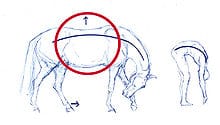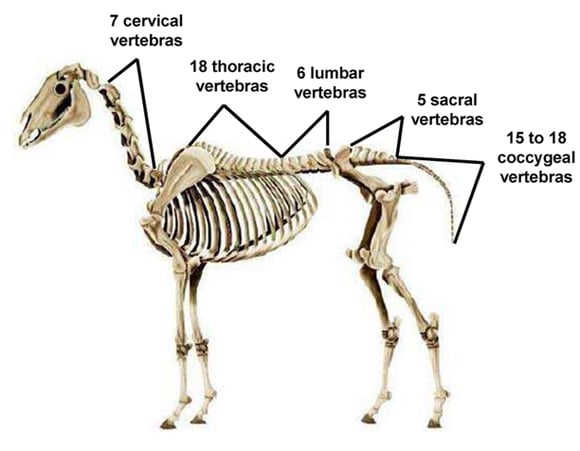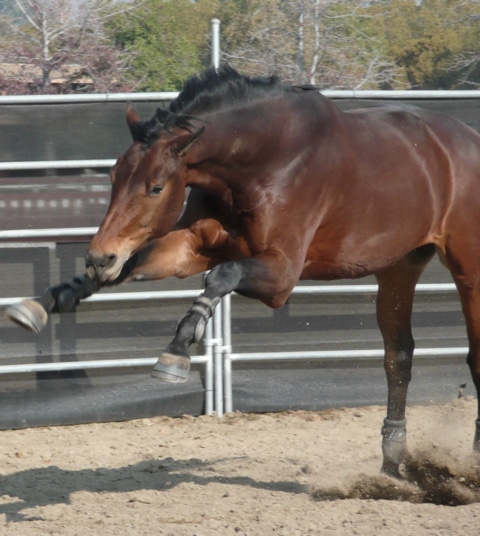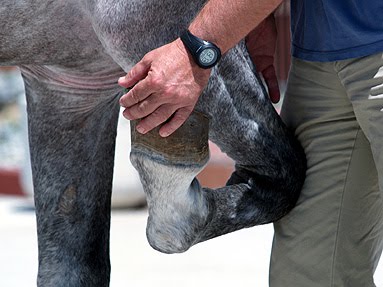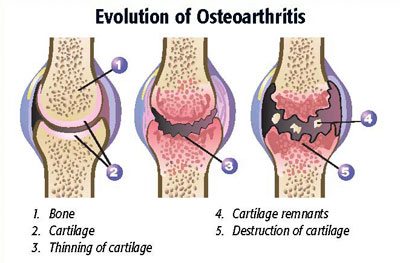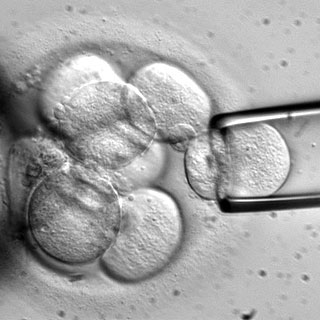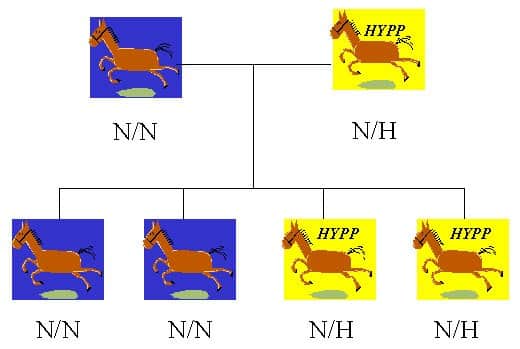Back pain is one of the more frustrating problems with which those who ride horses – especially performance horses – have to deal. And it’s at least as frustrating for veterinarians to deal with, because there is so much wildly conflicting information out there about diagnosis and treatment. Just about every aspect of back pain is frustrating… and even more so when people try to pretend that this is an easy problem to diagnose and fix. It’s not, or, at least, it shouldn’t be, at least not sometimes. I’ve tried to figure out how to condense this into 1500 or so words, but I can’t, so this article is the first of two parts. In part one, we’re going to mostly focus on what we’re dealing with when we talk about back pain the the horse – part two will focus on diagnosis and treatment.
WHY DO HORSES GET BACK PAIN?
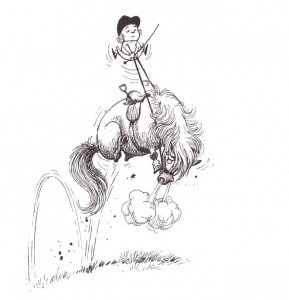 Oh, gosh, I imagine that this could be quite a list. There are many conditions that can result in back pain, including, most seriously, arthritis of the vertebrae (the bones of the back), a condition which, frankly, isn’t curable. It also seems reasonable to surmise that that people of various sizes and shapes contribute to back problems in horses, by riding, with varying degrees of finesse and athleticism, on horses of various shapes and sizes, which themselves have varying degrees of finesse and athleticism, in various disciplines, which require them to pull, turn, flex, jump, round up, etc., etc. And people do this by riding horses in saddles of various shapes and sizes, covered by pads of various shapes and sizes, or by asking to horses to pull things in all sorts of harnessing rigs. All of that probably contributes a good bit of stress to the horse’s back, as well.
Oh, gosh, I imagine that this could be quite a list. There are many conditions that can result in back pain, including, most seriously, arthritis of the vertebrae (the bones of the back), a condition which, frankly, isn’t curable. It also seems reasonable to surmise that that people of various sizes and shapes contribute to back problems in horses, by riding, with varying degrees of finesse and athleticism, on horses of various shapes and sizes, which themselves have varying degrees of finesse and athleticism, in various disciplines, which require them to pull, turn, flex, jump, round up, etc., etc. And people do this by riding horses in saddles of various shapes and sizes, covered by pads of various shapes and sizes, or by asking to horses to pull things in all sorts of harnessing rigs. All of that probably contributes a good bit of stress to the horse’s back, as well.
ASIDE: I remember one of my vary first calls as a veterinarian, to see a lovely black horse (I think it was a Fresian). The owner, who, as I recall, was about 5′ 4″ tall, and weighed well over 200 pounds by my quick estimate, led the horse up. After introducing myself, I asked, “What’s the problem?” And the owner said, “Well, I think his back is sore.” As I recall, the horse’s back was sore. But the cause, well… that was, as we might say, “multi-factorial.” Honestly, it was an early introduction to some of the challenges that veterinarians can face.
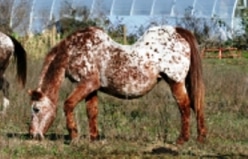 Back pain is an extremely common problem in people, especially as they age and get out of shape. So, as common as it is in people, I don’t think that it’s unreasonable to surmise that horses might have back pain, too, and especially considering all of jumping, turning, rounding up, etc., and also all of the flopping around that goes on on top of them (of course, I’m not talking about you, dear reader). But, as with most things, the devil is in the details.
Back pain is an extremely common problem in people, especially as they age and get out of shape. So, as common as it is in people, I don’t think that it’s unreasonable to surmise that horses might have back pain, too, and especially considering all of jumping, turning, rounding up, etc., and also all of the flopping around that goes on on top of them (of course, I’m not talking about you, dear reader). But, as with most things, the devil is in the details.
All that said, with back pain, as with most every other health problems, it’s not always the same. Acute back pain is that which shows up all of a sudden. Chronic back pain is that which has been going on for a while, and which is often related to some abnormality. Two very different animals, as we shall see.
A QUICK LOOK AT THE HORSE’S BACK
Let’s quickly look at the horse’s back. It’s made up of a bunch of individual bones. Each one is called a vertebra, or, in plural, vertebrae (you’ll notice that on the illustration, below, which is otherwise excellent, the plural is wrong).
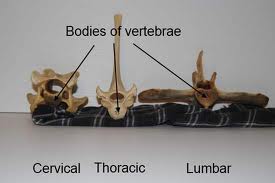 When it comes to the vetebrae themselves, there are a couple of thing I want you to notice.
When it comes to the vetebrae themselves, there are a couple of thing I want you to notice.
- The vertebrae have these big bony spines. They’re called spinous processes. There are spinous processes on top of the vertebrae (dorsal spinous processes) and ones that stick out to the side (transverse processes). The ones on the top – the dorsal processes – are the ones that most people worry about.
- Depending on where in the back you’re looking, the spinous processes are either really long (at the withers) or they’re not quite as long (farther back, in the lumbar region).
- The bodies of the vertebrae are where the spines are attached. If the bodies of the vertebrae are the fuselage of an airplane, the spinous process on top are the tail fins, and the spinous process that stick out from each side are the wings. And in the middle of the vertebral body – the passenger section, as it were – is the hole through which the spinal cord runs.
You’ll see why this is important in a bit.
PROBLEM 1 – The Condition
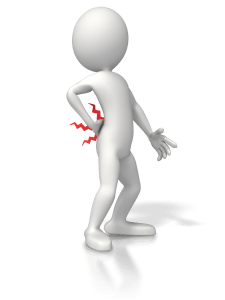 There’s a big problem right off the bat when we talk about back pain in horses. You see, “back pain” really isn’t a disease at all. Rather, pain (of anything) is a sign of a disease. Signs of disease are caused by something (the disease). So, if you say, “My horse has back pain,” you’re really saying that he has a sign of something. But it can be devilishly difficult to tell just what that something is. And those difficulties are probably why, when it comes to back pain, there are so very, very many different opinions.
There’s a big problem right off the bat when we talk about back pain in horses. You see, “back pain” really isn’t a disease at all. Rather, pain (of anything) is a sign of a disease. Signs of disease are caused by something (the disease). So, if you say, “My horse has back pain,” you’re really saying that he has a sign of something. But it can be devilishly difficult to tell just what that something is. And those difficulties are probably why, when it comes to back pain, there are so very, very many different opinions.
Here’s a list of some things that can cause back pain in people: Disk breakdown, spasms, tense muscles, ruptured disks, psychological problems, injuries from sprains, fractures, accidents, and falls, aging, overweight, poor physical condition, scoliosis, spondylolisthesis (basically, new bone growth), arthritis, spinal stenosis (narrowing), pregnancy, kidney stones, infections, endometriosis. and fibromyalgia.
If I missed anything – which I probably did – I apologize.
Yes, but what about horses? Well, if it’s any comfort, horses probably DON’T have disc pain, mostly because their discs are quite different from the human disc. The human disc is built something like a jelly doughnut, and, when there is a disc problem, the soft center (the jelly in the doughnut, as it were) can squeeze out. But the horse disc is built very differently, and horses are mostly thought not not have disc problems.
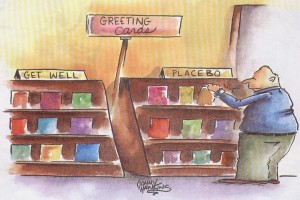 Horses probably don’t show signs of back pain because of their own psychological problems, either, although some horses that have had painful areas in their backs will remember it, and act accordingly. That said, I do think that psychological issues with owners, trainers, or people who diagnose and treat back pain, could be a problem. And that means that there might be some number of horses that don’t really have back pain, but get diagnosed and treated for it anyway. More on that, later.
Horses probably don’t show signs of back pain because of their own psychological problems, either, although some horses that have had painful areas in their backs will remember it, and act accordingly. That said, I do think that psychological issues with owners, trainers, or people who diagnose and treat back pain, could be a problem. And that means that there might be some number of horses that don’t really have back pain, but get diagnosed and treated for it anyway. More on that, later.
Back muscle soreness can be caused by many things: bad saddles, bad riding, lack of exercise, normal exercise, and as a result of problems somewhere else in the horse’s body (say, arthritis in the hind limbs), to name a few. Problems with the vertebrae can be in the vertebral body, or, much more controversially, in the spinous processes. There’s a whole discussion to be had about a problem that diagnosed commonly in some areas – not so much in others – called “kissing spines,” or “impinging” or “overriding” spinous processes. That’s for another article.
LESSON ONE (for problem one) – Back pain is not a disease, it’s a clinical sign of a problem. As a general rule of medicine, if you can, try not to simply treat a clinical sign; you want to try to treat the problem(s).
PROBLEM 2 – The Diagnosis
In people, coming up with a diagnosis of back pain is usually pretty easy. The patient goes to the doctor (or therapist of some flavor, or whatever), and says something like, “My back hurts.”
PROBLEM 2a – The easy diagnosis option is out, when it comes to horses.
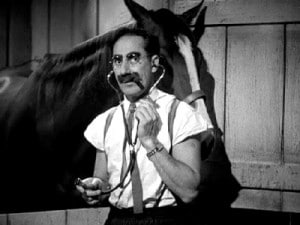 ASIDE: People ask me all of the time if I wish that horses could talk, thinking that it would make my job easier. However, I’m not sure that it would. In fact, a talking horse might be pretty annoying. Knowing horses, they’d say stuff like, “Ow” when I gave them a shot, or they’d have some snide aside about me arriving late, or they’d pepper me with bad jokes or something. But when it comes to back pain – and pretty much only back pain – I’d have to say, “Absolutely, yes, I wish that horses could talk,” because it would remove a good bit of the subjectivity to the problem of back pain in horses. And when it comes to subjectivity and back pain in horses, well, there’s a lot. You push, pull, prod, saying, in effect, “Does that hurt?” and, if the horse does something that makes the examiner think that is a pain response, well, then, the horse gets diagnosed with back pain.
ASIDE: People ask me all of the time if I wish that horses could talk, thinking that it would make my job easier. However, I’m not sure that it would. In fact, a talking horse might be pretty annoying. Knowing horses, they’d say stuff like, “Ow” when I gave them a shot, or they’d have some snide aside about me arriving late, or they’d pepper me with bad jokes or something. But when it comes to back pain – and pretty much only back pain – I’d have to say, “Absolutely, yes, I wish that horses could talk,” because it would remove a good bit of the subjectivity to the problem of back pain in horses. And when it comes to subjectivity and back pain in horses, well, there’s a lot. You push, pull, prod, saying, in effect, “Does that hurt?” and, if the horse does something that makes the examiner think that is a pain response, well, then, the horse gets diagnosed with back pain.
So what might the horse do to cause a raise a concern about back pain? How about this list of diagnostic criteria, from a supplement site?
- Objects to being saddled
- Slow to warm up
- Difficult to shoe
- Bad attitude
- Resists work
- Tail swishing
- Bolting or running away
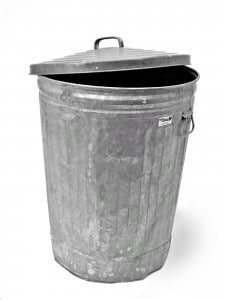 So., given that list, here’s a question. Is there any horse that hasn’t done one or more of those behaviors at some point? You see, a big problem here is that just about anything can be found in a horse – normal or otherwise – to support a diagnosis of back pain in a horse. And especially if you want to call it “subclinical” back pain, that is, back pain that allegedly exists, but isn’t causing any obvious, objective clinical signs.
So., given that list, here’s a question. Is there any horse that hasn’t done one or more of those behaviors at some point? You see, a big problem here is that just about anything can be found in a horse – normal or otherwise – to support a diagnosis of back pain in a horse. And especially if you want to call it “subclinical” back pain, that is, back pain that allegedly exists, but isn’t causing any obvious, objective clinical signs.
ANOTHER ASIDE, ABOUT OTHER DISEASES: If you look at the list of signs of back pain, above, you could also opine, “Maybe the horse has ulcers,” or, “Maybe the horse has EPM.” When you rely on really vague and common signs, you end up with what has been called a “garbage can” diagnosis, that is, you can throw just about anything in there.
And that takes us back to Problem 2. The diagnosis of “back pain” isn’t something that should necessarily come easily. In human medicine, other than the patient telling the doctor that his or her back hurts, there’s not a lot of reliable, objective evidence to support a diagnosis of back pain with many patients. When you go to the doctor for back pain, after taking your medical history and doing a physical exam, he or she might order some other tests, like X-rays, or magnetic resonance imaging (MRI), or a computed tomography (CT) scan, or even blood tests. It can be the same with horses. But after all of those tests, we come to two more complicating factors.
TWO MORE PROBLEMS (2b and 2c, if you’re keeping score)
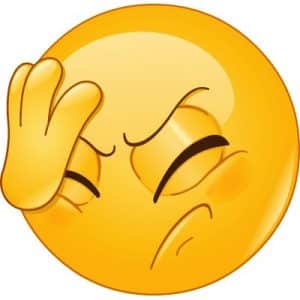 Medical tests may not show the cause of back pain. In fact, medical tests for back pain in people can be very confusing. Some really bad looking medical tests are recorded in people that have absolutely no clinical signs of back pain. And vice versa, that is, some really bad back pain is seen in people that have absolutely great looking medical tests.
Medical tests may not show the cause of back pain. In fact, medical tests for back pain in people can be very confusing. Some really bad looking medical tests are recorded in people that have absolutely no clinical signs of back pain. And vice versa, that is, some really bad back pain is seen in people that have absolutely great looking medical tests.- Many times, the cause of back pain is never known.
And that is pretty much exactly the way that it is in horses.
Which leads to this disturbing fact: there is no single, objective test that can be used to give a reliable diagnosis of the cause of back pain in the horse.
So, that’s part 1. Chew on this info for a bit, and then I’ll post part 2, which will be about diagnosis and treatment. And, hopefully, by the end of the day, you’ll be somewhat less bewildered: with the emphasis on the “somewhat.” When it comes to diagnosing back pain, it isn’t (or at least it shouldn’t necessarily be) easy!


